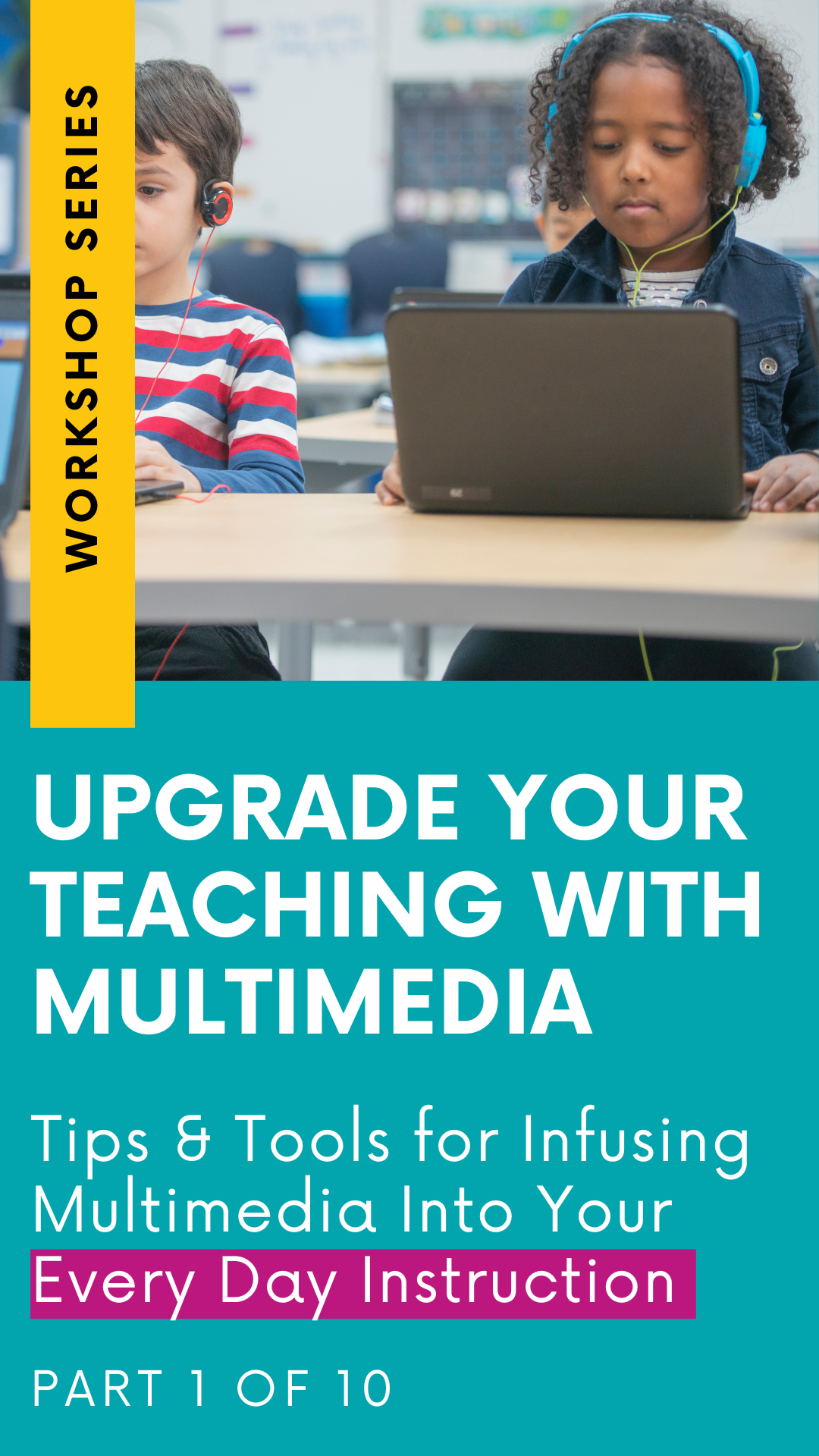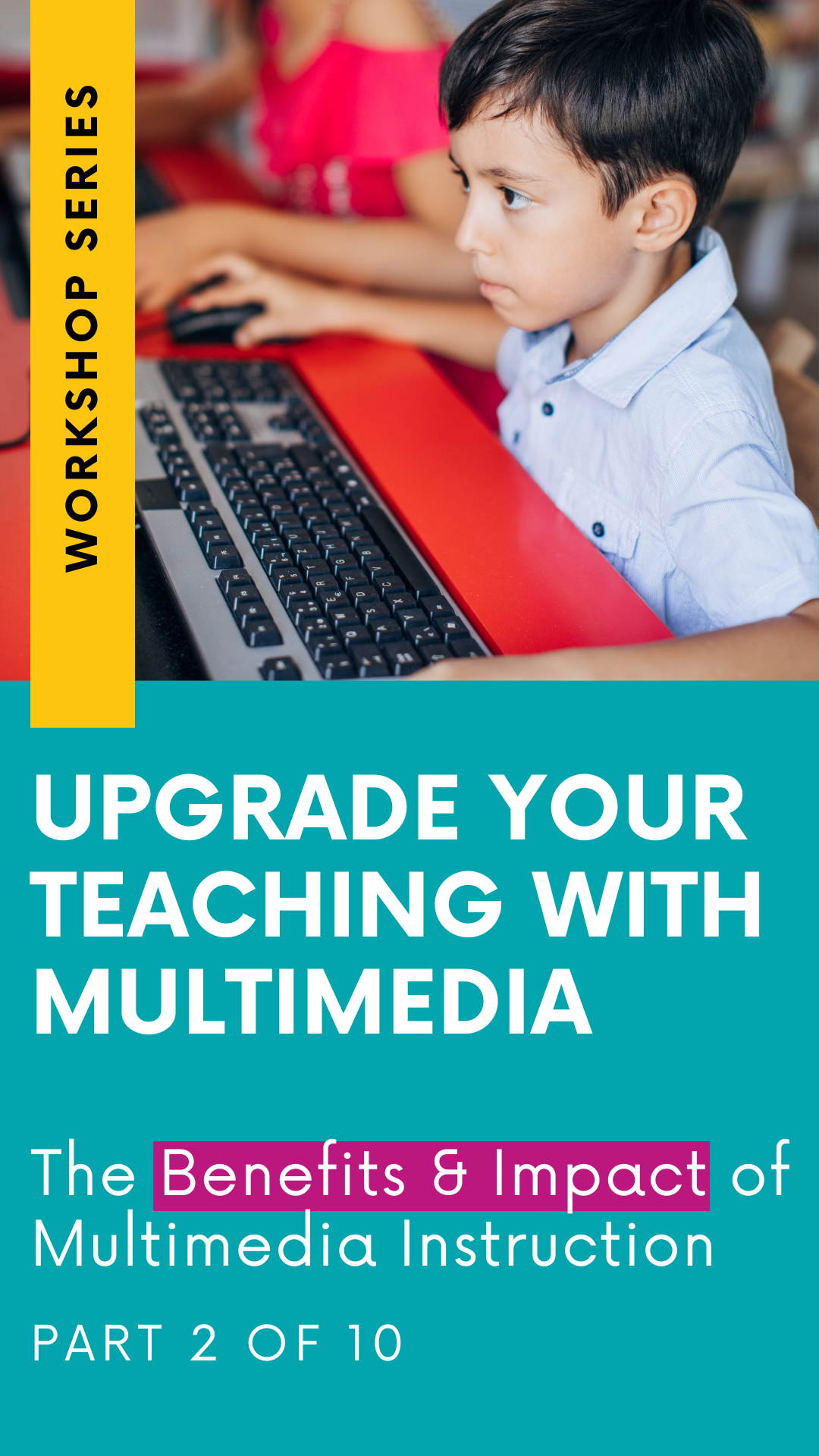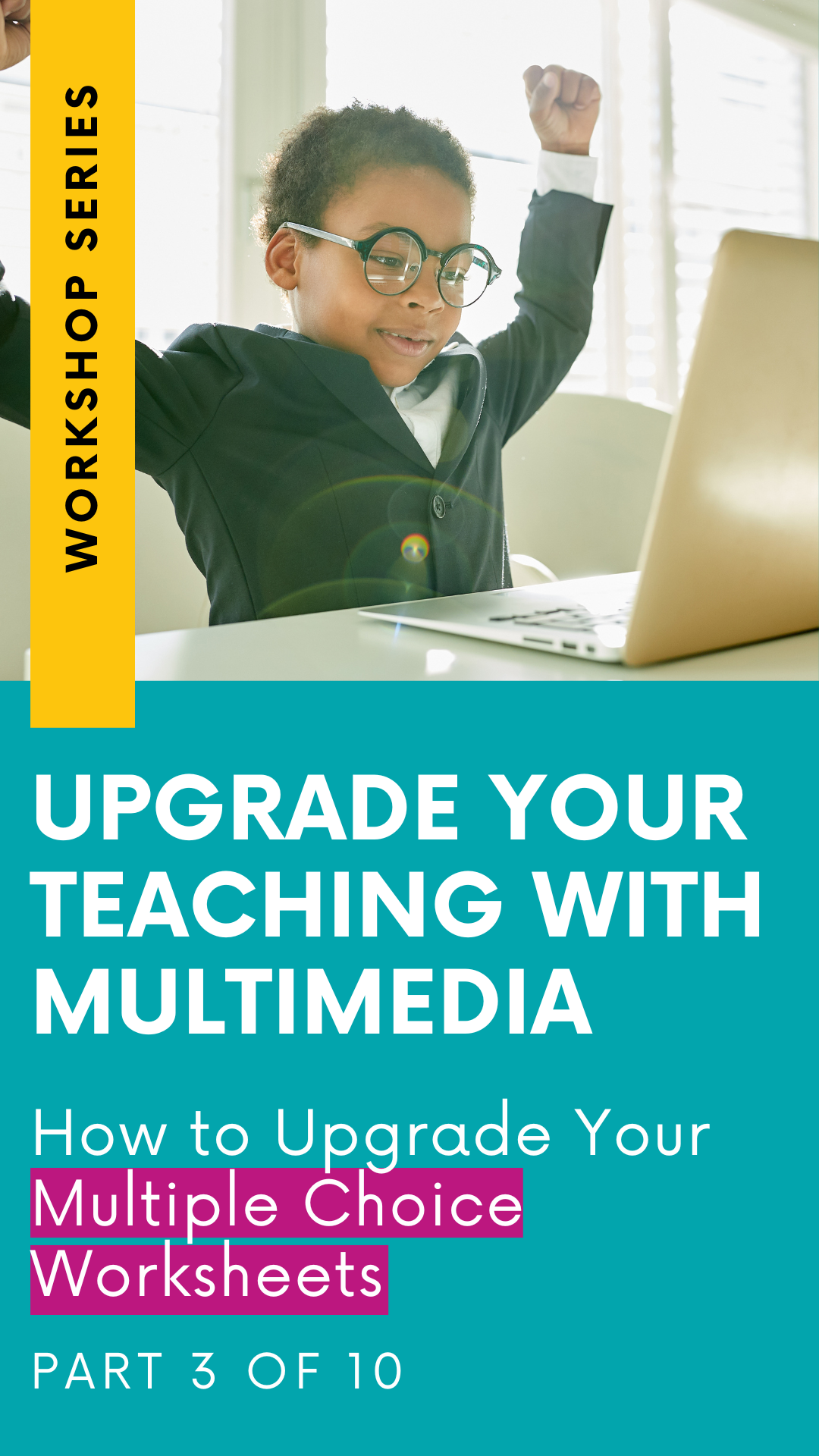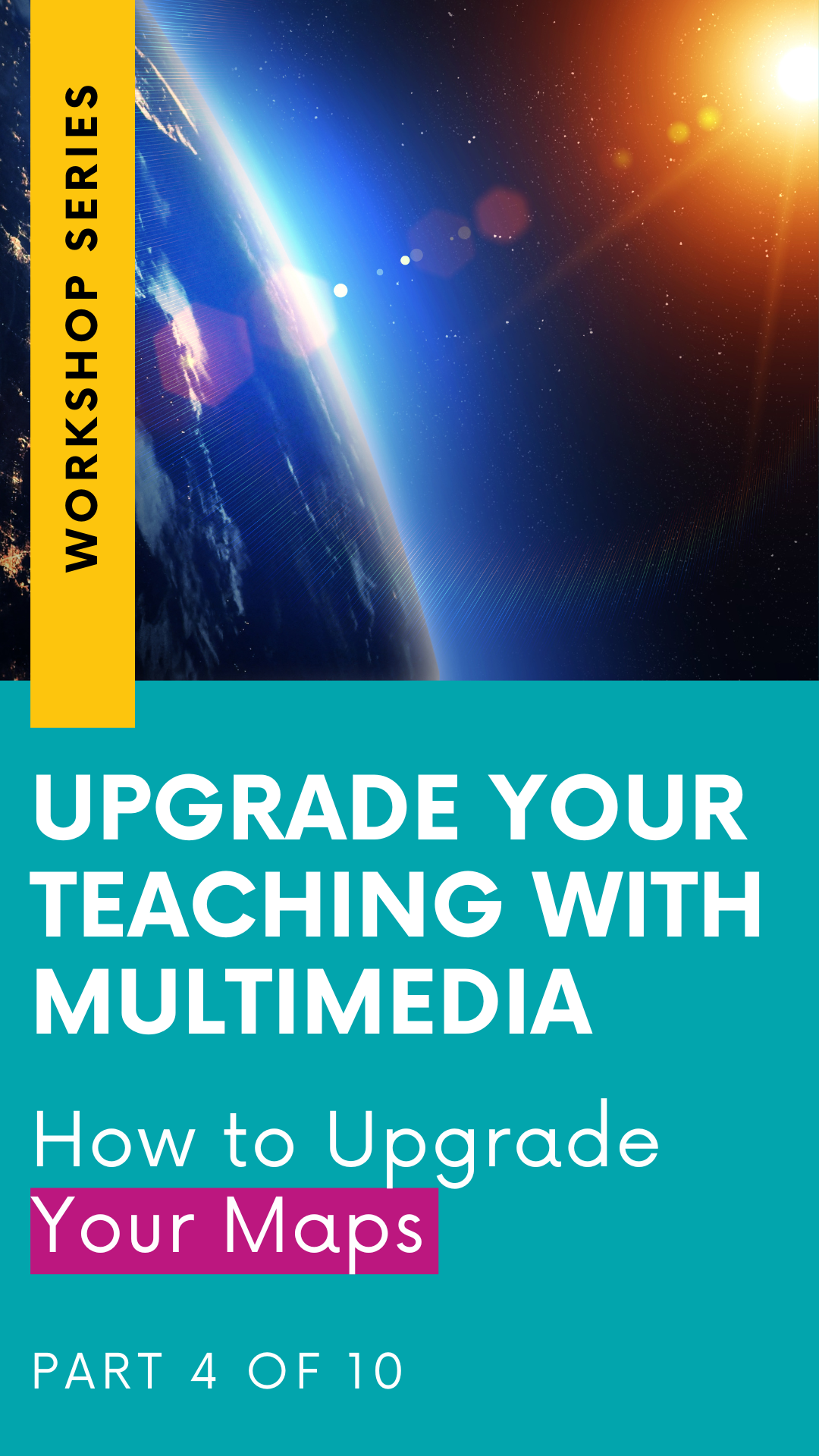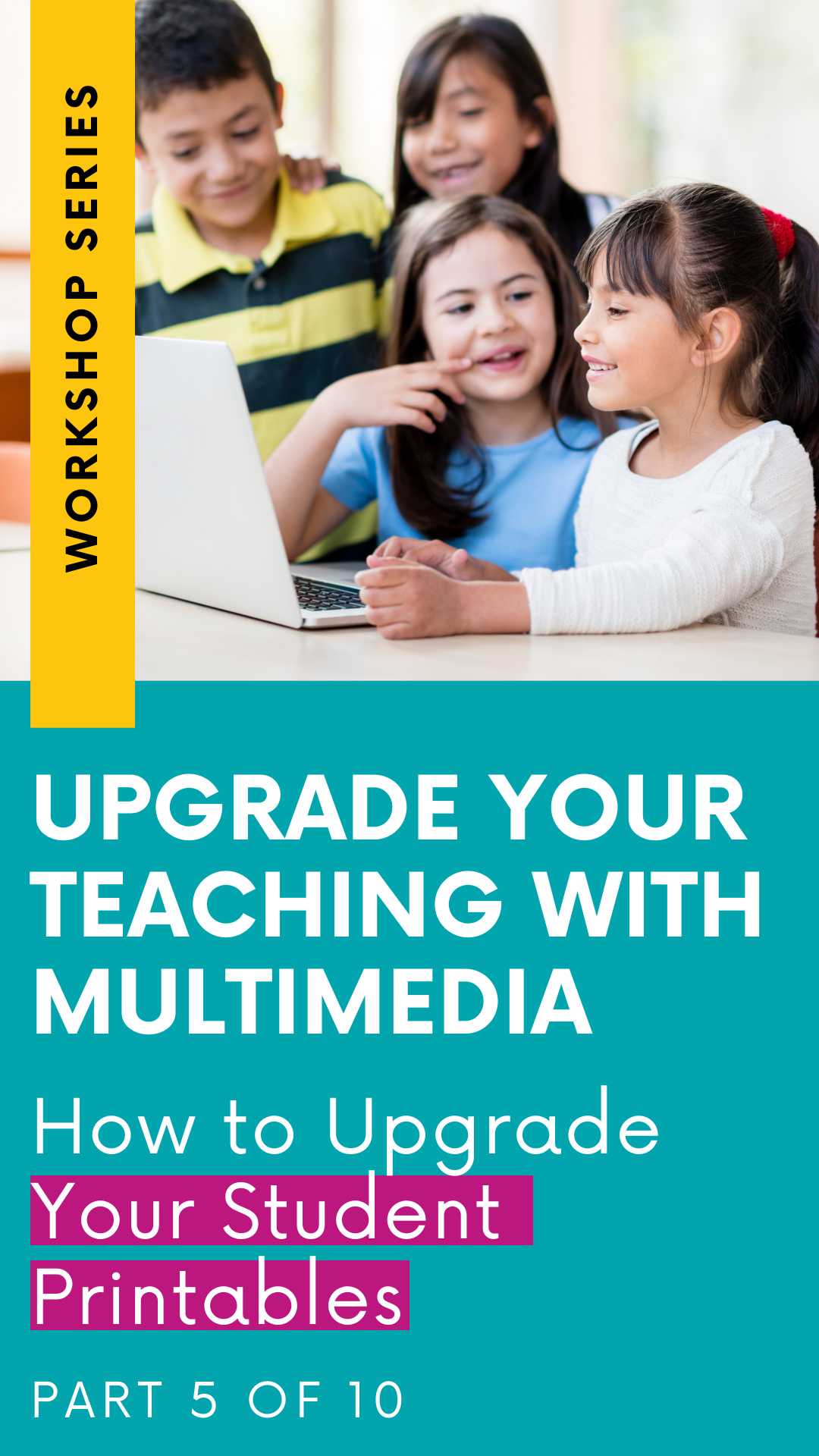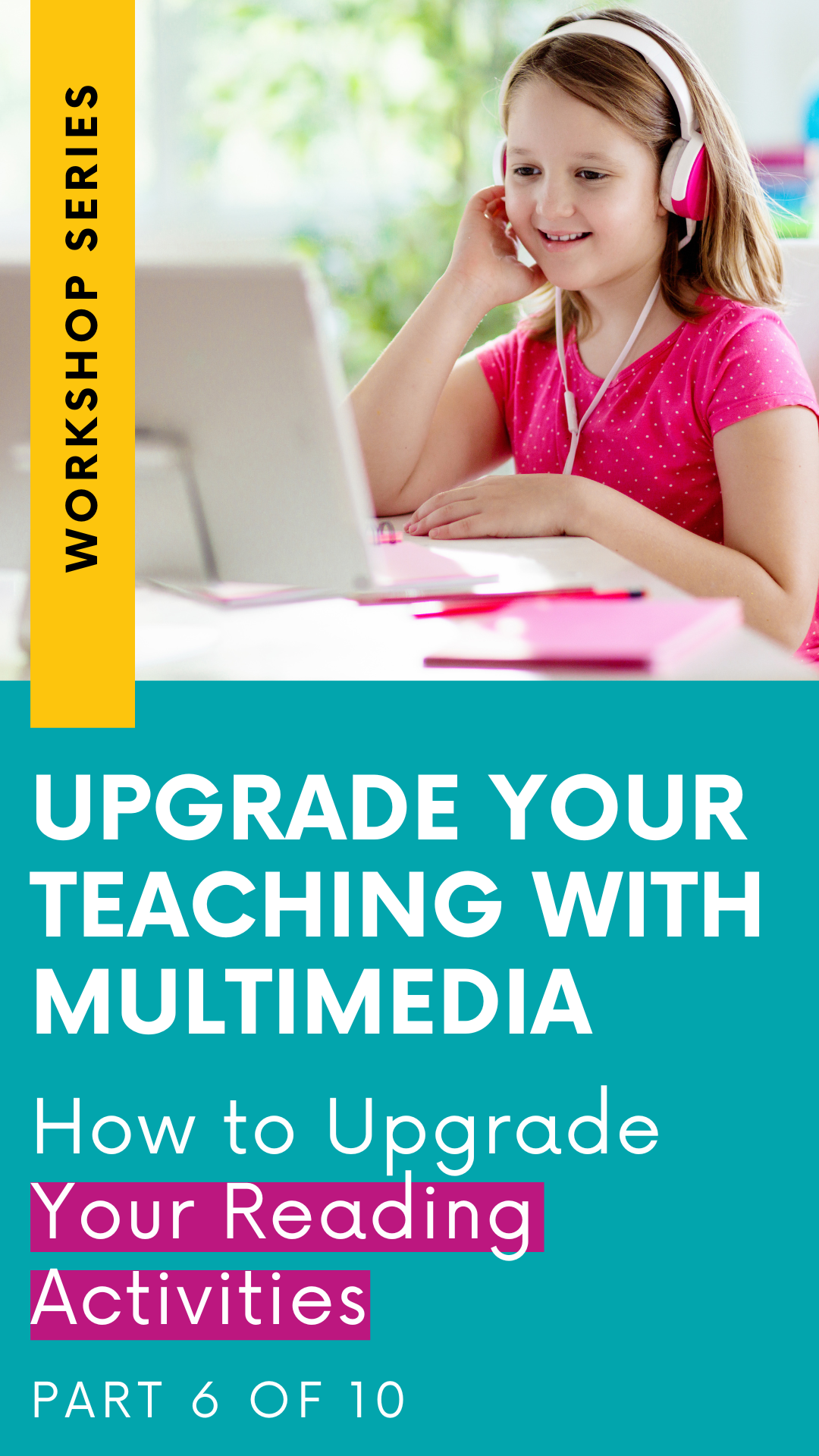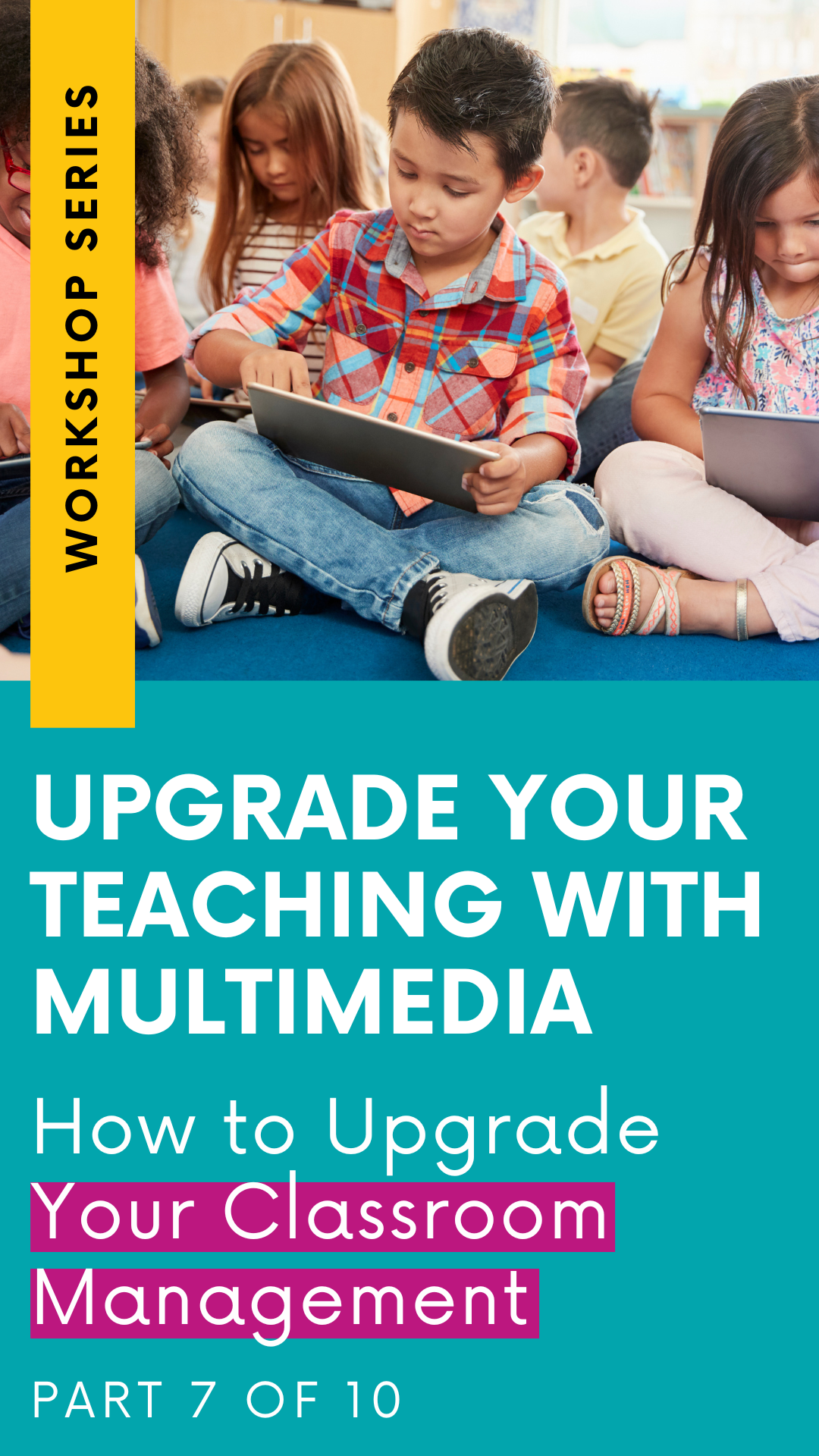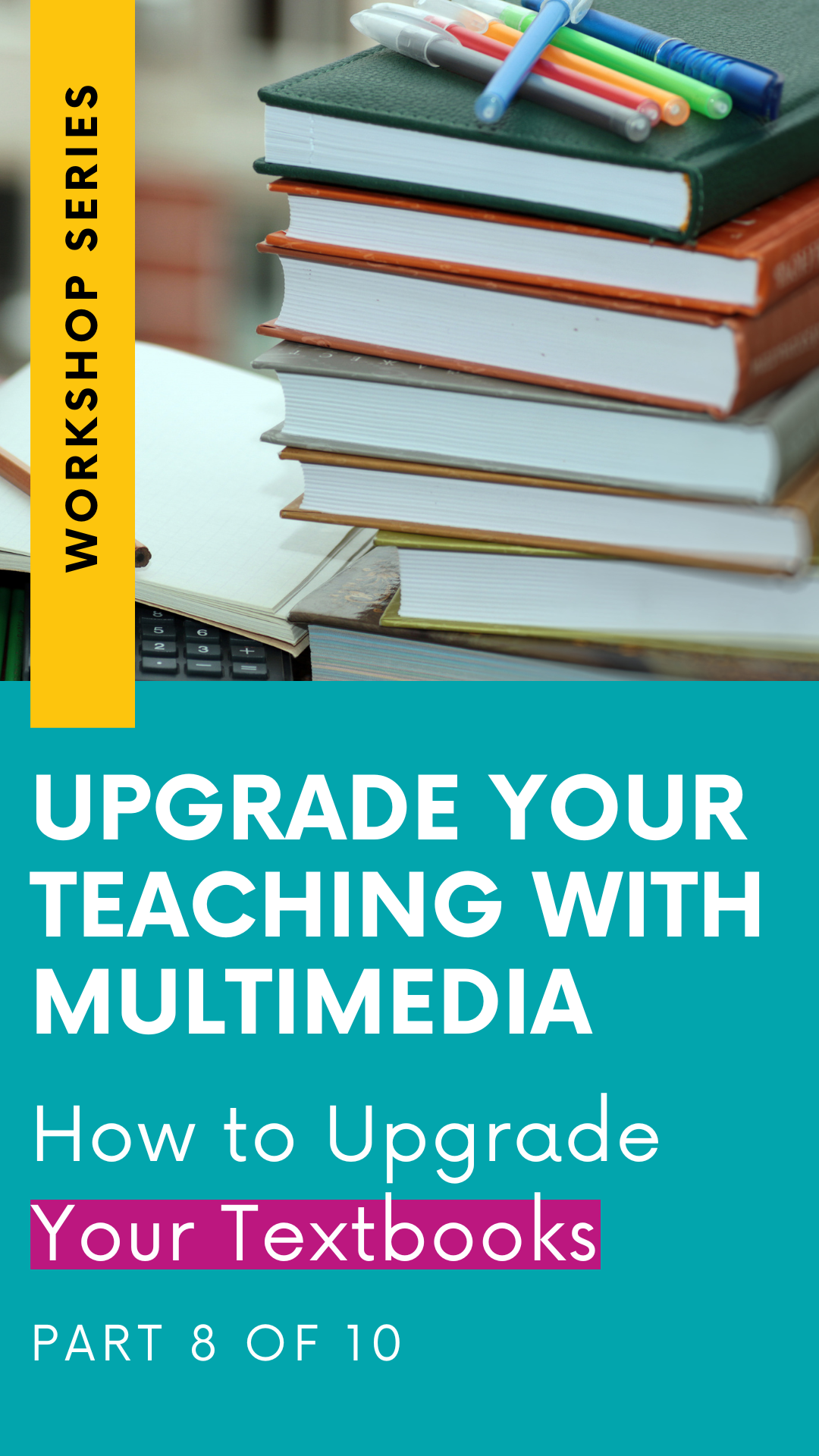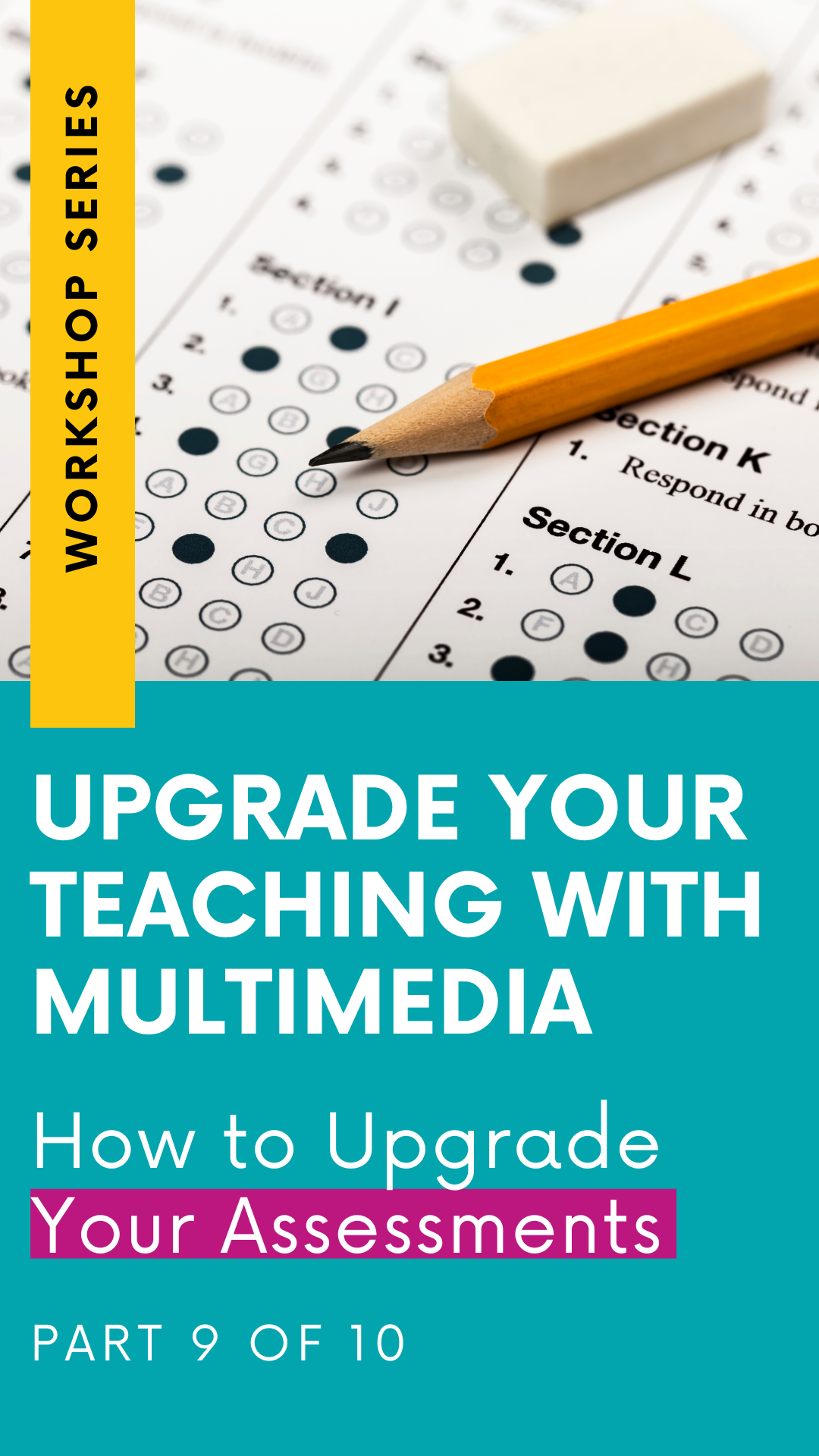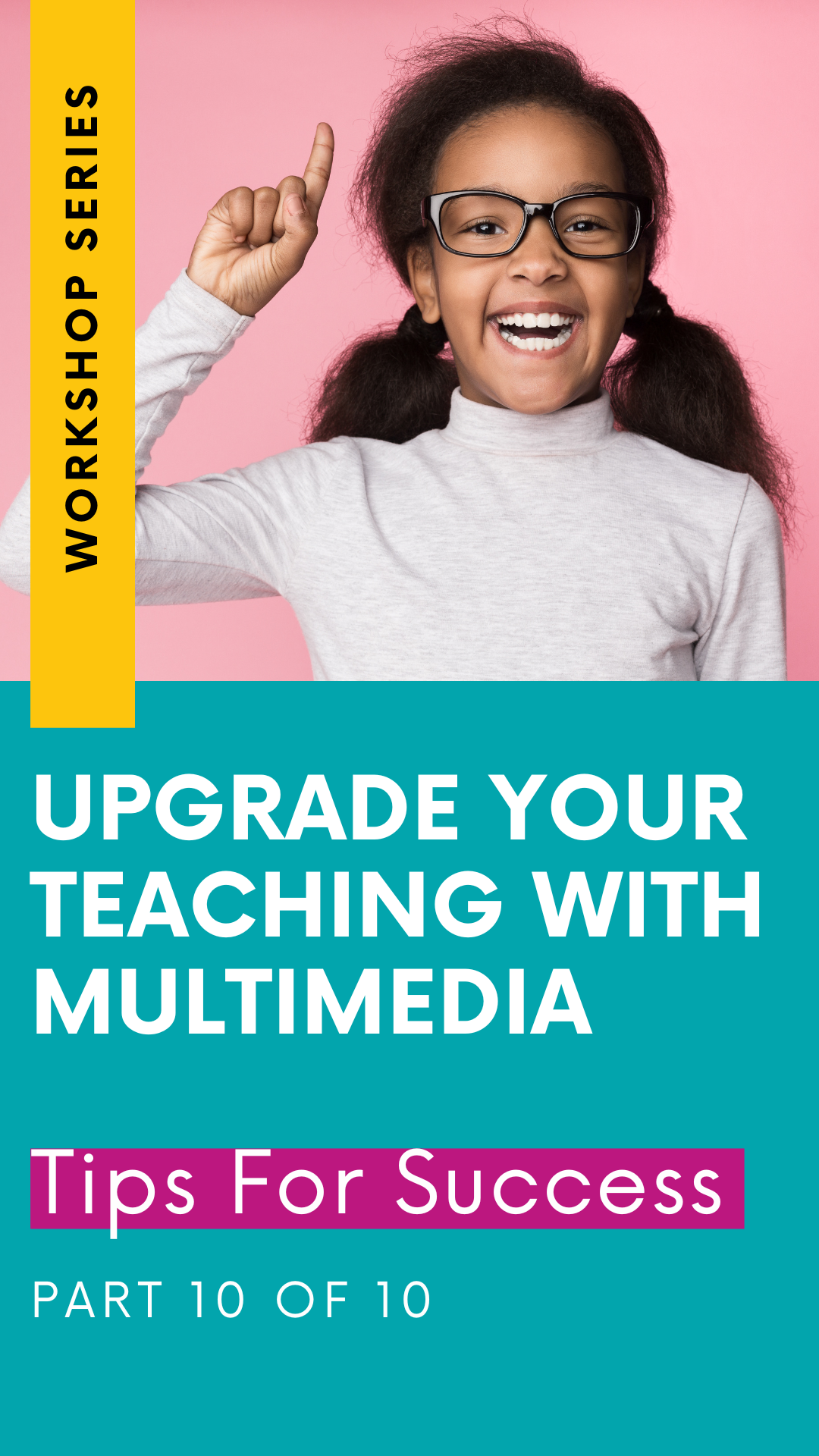Creating a Multimedia-Rich Classroom: 3 Tips for Success (From the Upgrade Your Teaching with Multimedia Workshop Series: Part 10)
Wow, we've covered a ton of incredible ways to upgrade your instruction and assessment using technology and multimedia tools. We’re waving goodbye to those old worksheets, maps, and student printables and saying hello to a more engaging and interactive learning experience!
But before we wrap things up, I wanted to offer you some tips for success and give you permission to take it slow when it comes to multimedia instruction. We all know that completely overhauling our teaching practices overnight is unrealistic and overwhelming.
So here's my challenge for you: choose one or two things you'd like to upgrade in your classroom and start there. Become a master of that tool or strategy, and let your students get comfortable with it too before adding something new.
Creating a Multimedia-Rich Classroom: 3 Tips for Success
Tip 1: Consider your classroom layout
Creating a classroom setup that supports the use of technology and multimedia is crucial for implementing the upgrades we've discussed in this workshop series. So let's dive a bit deeper into this topic!
Consider the accessibility of devices for your students. Can they easily access laptops, tablets, or other digital devices? Make sure you have enough devices available for your class size and that they are in good working condition. Additionally, think about how you can organize and store these devices to make them easily accessible when needed.
To promote effective collaboration and engagement, it's beneficial to have designated areas in your classroom for different types of technology use. This could include a whole-class area where students can gather around a large screen or interactive whiteboard for shared learning experiences. You might also create smaller areas or stations for small-group or individual technology use, allowing students to work independently or collaborate in smaller teams.
Ensuring that students know where to find important equipment is equally important. Clearly label storage areas or shelves for headphones, microphones, charging cables, or any other accessories that students may need when using technology. By establishing a system where everything has a designated place, students can easily locate the equipment they require, saving valuable instructional time.
Remember, a well-organized and technology-friendly classroom setup sets the stage for seamless integration of multimedia tools and enhances students' access to digital resources. So take the time to assess your current classroom layout and make any necessary adjustments to optimize the use of technology and multimedia in your teaching practice.
By creating a supportive environment, you're empowering your students to confidently engage with the exciting world of technology and multimedia, ultimately enhancing their learning experience and preparing them for the digital age we live in. So, let's set up our classrooms for success and embark on this multimedia journey together!
Tip 2: Tailor your approach to your students' needs and preferences
When incorporating multimedia into your instruction, it's important to consider the unique needs and preferences of your students. Some students may have sensitivities to sound or visuals, so it's crucial to be mindful of potential over-stimulation. While multimedia can greatly enhance the learning experience, it's essential to strike a balance that ensures all students can comfortably engage with the content.
One way to address this is by assessing the level of multimedia inclusion in your lessons. You don't have to pull out all the stops and include every bell and whistle in every single multimedia activity. Instead, be intentional and selective in choosing the multimedia elements that will be most effective for achieving your learning objectives. By thoughtfully curating the use of multimedia, you can create an inclusive and engaging environment for all learners.
Consider the supports your students may need and how multimedia and technology can provide those supports. For example, if you have students who struggle with reading, incorporating audio support in your lessons can greatly enhance their understanding and participation. By providing alternative ways for students to access information, such as through audio recordings or captions, you can create a more inclusive learning experience that caters to diverse learning styles and needs.
Additionally, take note of the times of day when technology works best for your class. Some students may be more alert and focused in the morning, while others may thrive in the afternoon. By considering the optimal times for technology use, you can plan your multimedia activities accordingly, maximizing student engagement and attentiveness.
Furthermore, pay attention to which multimedia activities get your students most excited. By observing their responses and level of enthusiasm, you can gauge which tools and resources resonate most with your class. This insight can help you tailor your instruction and assessment using multimedia tools that genuinely engage and motivate your students.
Remember, the key is to create a balanced and supportive learning environment that leverages multimedia to enhance understanding and engagement without overwhelming or overstimulating students. By being mindful of their sensitivities, addressing their specific needs, and capitalizing on their excitement, you can create a multimedia-rich classroom experience that fosters active participation and meaningful learning.
Tip 3: Set clear expectations
Fear of chaos and the potential challenges that come with incorporating technology and multimedia in the classroom are common concerns for teachers. However, there are strategies you can implement to alleviate these fears and create a smooth and organized learning environment.
One effective approach is to set clear expectations ahead of time. Think about what background information your students need to successfully navigate and complete activities involving technology and multimedia. Providing clear instructions and guidelines at the beginning will help students feel more confident and prepared. By outlining the objectives and explaining the purpose of using technology or multimedia, you can set a positive tone and create a sense of purpose and focus in the classroom.
When introducing new technology or multimedia tools, it's important to gradually release responsibility to students. Start by demonstrating how to use the technology or multimedia resource, guiding them step by step through the process. As students gain familiarity and proficiency, gradually shift the responsibility to them, allowing them to explore and engage independently. This gradual release approach helps students build confidence and competence in utilizing technology effectively.
Consider the time needed for activities involving technology and multimedia. Recognize that using these resources often requires additional setup and preparation time. Account for this extra time in your lesson plans to ensure that students don't feel rushed or overwhelmed. By allowing sufficient time for students to access devices, log in to websites, or navigate digital activities, you create a calmer and more organized learning environment.
Clearly define your role as the teacher when incorporating technology and multimedia. Initially, you may play a more hands-on role, providing guidance and support to students as they navigate through new tools or resources. However, as students become more proficient, you can transition into a facilitator role, encouraging independent exploration and problem-solving. Being mindful of your evolving role as an educator in the digital age allows you to effectively support students while fostering their autonomy and ownership of the learning process.
Establishing clear routines and procedures for device use and troubleshooting is essential for maintaining order and minimizing disruptions. Develop a system for students to access and return digital devices, define guidelines for appropriate website or app usage, and provide a designated resource for troubleshooting common issues. Explicitly teach, model, and review these routines and procedures with your students to ensure a smooth and efficient integration of technology and multimedia in your classroom.
Other things to keep in mind
Providing students with multiple experiences related to the same instruction is a valuable approach to building familiarity and confidence. By revisiting and reinforcing concepts using different multimedia and technology tools, students have the opportunity to deepen their understanding and develop mastery.
For example, if you introduce podcasts as a means of delivering instruction, continue using them consistently for several weeks to allow students to become comfortable with the format, practice setting up and accessing episodes, and establish routines around listening and engaging with the content. Repetition and reinforcement can enhance students' engagement and retention of information.
It's important not to overload yourself or your students by attempting to incorporate every multimedia and technology tool all at once. Trying to do too much at once can be overwhelming and may not lead to the desired outcomes. Instead, take a gradual approach and ease into it.
Select one or two tools or strategies that align with your instructional goals and start implementing them in your classroom. Focus on becoming proficient in using those tools and allow your students to become familiar with them before introducing additional tools or strategies. By taking a step-by-step approach, you can build confidence and ensure a smoother integration of multimedia and technology in your teaching practice.
Keeping your learning objectives at the center of your instruction is crucial when using multimedia and technology. It's essential to have a clear purpose and meaningful intent behind incorporating these tools. Ask yourself how the use of multimedia and technology enhances or supports your instructional goals. Consider the specific ways in which these resources can facilitate student understanding, engagement, and achievement. By aligning multimedia and technology with your learning objectives, you ensure that their use is purposeful and contributes to meaningful learning experiences for your students.
Embracing the power of multimedia also allows you to differentiate instruction based on the unique needs and learning preferences of your students. With a vast array of multimedia resources available, you have the opportunity to provide various modalities and formats to cater to different learning styles and preferences. For instance, if you have students who struggle with reading, incorporating audio support can help them access and comprehend the content more effectively. Similarly, offering video resources can engage visual learners and provide alternative avenues for understanding complex concepts. By leveraging multimedia, you can create a rich and inclusive learning environment that accommodates diverse learners.
By following these tips, you'll navigate the world of multimedia instruction with confidence and success. Remember, the goal is to enhance student learning and engagement while developing those 21st-century skills. So go ahead, take a leap, and let multimedia transform your classroom into an engaging and dynamic space of learning!





